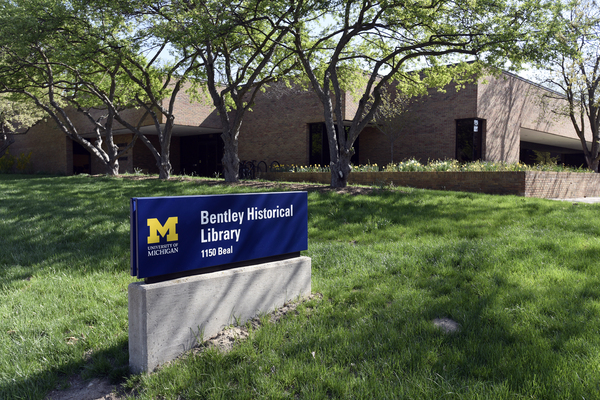Correspondence of the Blaustein family of New York. Karl Blaustein and his son Albert (who received his BA from the University of Michigan) were lawyers. Karl and his wife Rose also had a daughter, Marjorie, who was a writer and a journalist. This collection includes correspondence between Karl and Rose, and their children Albert and Marjorie Blaustein. Many of the letters are written to Albert during his time as a student at the University of Michigan and during his career as a journalist and service member.
This collection contains the Blaustein family correspondence. Materials include correspondence between Karl, Rose, Albert, and Marjorie, as well as newspaper clippings and other ephemera. The first binder began in the summer of 1937, before Albert left for the University of Michigan. Rose, Marjorie and Albert were on vacation, and Karl wrote to them in their absence. The next six binders include letters from Albert's time at university. The first of the six binders contains a collection of Rose and Marjorie's letters to Albert. The next five binders are organized by date rather than sender. The remaining binders contain letters from Albert's time in Chicago and in the military. In these letters, the family discussed daily life and politics, especially related to Nazism and World War II. Most of the letters were written by Karl to Albert.
The remaining correspondences are organized into folders by recipient. These folders are arranged chronologically and contain correspondence and ephemera. Three of the folders contain letters from Marjorie and her parents during her time at the University of Chicago. She wrote about her efforts as a writer as well as daily life and the war. Another set of folders contains letters from Karl and Rose during the summer of 1943. Rose was traveling, and she wrote about her trips to Marjorie in Chicago, Wisconsin, and various Jewish summer resorts.
The remaining folders contain greeting cards, telegrams, and various letters dating from 1920 to 1965. One of these folders contains ephemera from Harvard and Karl's school papers.
A digital resource is also included. Carmen D. Valentino, the seller of the collection, provided the resource, and it contains research on each member of the Blaustein family. The document also details the contents of the collection. Included is an inventory of letters and their authors, as well as some transcribed letters. Information in this resource has not been verified by Bentley staff.
